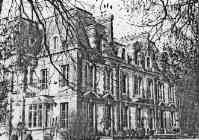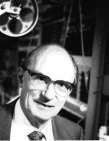The first breaks into Enigma in Bletchley Park
The British Intelligence Services were aware of the Enigma
machine right from its invention in 1918 and in fact developed
their own version of Enigma which became the TypeX
machine.
They were also aware that it had been adopted by the German
Navy in 1926 and later by the rest of the German Forces.
Unfortunately they did not recognise, as the Poles did, that a
cryptographic attack on Enigma traffic required a completely
different approach to that with which the British had been so
successful in the 1914-18 War. Then it had been linguists that
had achieved the success with non-machine generated codes
and ciphers. Now it was the turn of mathematicians and
scientists.
Dilly Knox was responsible for the early British attempts to
break into the Enigma traffic and although he had some
success against unmodified Italian Navy and Spanish Enigma traffic, he
could make no inroads into the German Forces traffic which
included the use of the Stecker board.
After the Polish revelations in 1939 it was decided to recruit
mathematicians and the first was Peter Twinn followed by Alan
Turing who had already made visits to GC&CS in London in 1938.
These were soon followed by Gordon Welchman and John Jeffreys.
Now that the British had the Enigma wheel internal wirings, as
supplied by the Poles, work could concentrate on solving the
base settings of the Enigma and the message keys.
John Jeffreys took the Zygalski sheets and
enhanced them to allow for five rather than three wheels.
Gordon Welchman had, quite by chance, been given a first
task of analysing the patterns of Radio traffic used by the
Germans. He soon realised that a large amount of information
about the German forces could be deduced without actually
being able to decipher the messages.
Rodding.
An early method for breaking and deciphering Enigma messages was called "Rodding".
It is described in Turing's "Treatise on Enigma" which he wrote early in the War.(follow the link from codesandciphers
to Frode Weierud's web site to print Chapters 1,2 & 4 of Turing's treatise)
Turing's description is not very clearly written, but after a considerable
amount of effort it can now be demonstrated.
Click here to try Rodding on a German Railway Enigma.
(note: this is really for the anoraks, all the tools are there but it is not easy!)
The importance of Rodding was that providing a Crib could be found for an
intercepted Enigma cipher text, the right hand wheel could be determined and its
start position found. Once that was done the middle and left hand wheels
were relatively easily found.
Click here to try breaking an Army Enigma
message using Rods(without Steckers).See Rodding text for an explanation.
Turing also described what he called "Comic strips". This was
a paper method involving representing the Enigma wheels
by strips of paper or card. A colour coding
was used to identify the Enigma wheels.
Click here to try a paper Steckered Army Enigma.
The Joint Polish French effort
The Polish code breakers had escaped from Poland through Romania and made
their way to join the French team at Chateau Vignolles just outside Paris.
In December 1939, Alan Turing took a set of the re-perforated Zygalski sheets
from Bletchley Park to Chateau Vignolles.
|

|
It was here in early January 1940 that
the joint Polish - French team first broke back into Enigma. Everyone was mighty
relieved that both the machine and its procedures had not been changed since the
Polish team last broke it in July 1939.
The first breaks in the Park
Then on 14th January 1940, Dilly Knox's team made their first break into Enigma
in the Cottage in Bletchley Park.
Once messages were deciphered it was found that they came from the German Air Force,
not the Army as had been initially thought.
Once breaking had started, the code breakers began to find out the errors
that the Germans were making in their use of the Enigma machine.
The Weaknesses of the German Enigma
If used properly it was unbreakable BUT the Germans made
mistakes
Procedural errors
Forgot to change key settings
Sent the same message twice
Used non random message keys like AAA or ASD
On key sheets never put the same wheel in the same
position two days running
Key security
Sent out sets of key sheets for many months ahead into
vulnerable positions like weather ships.
Cribs
Used standard message formats too often thus allowing
parts of messages to be guessed. ie Cribs to be found.
This page was originally created by the late Tony Sale
the
original curator of the Bletchley Park Museum |


